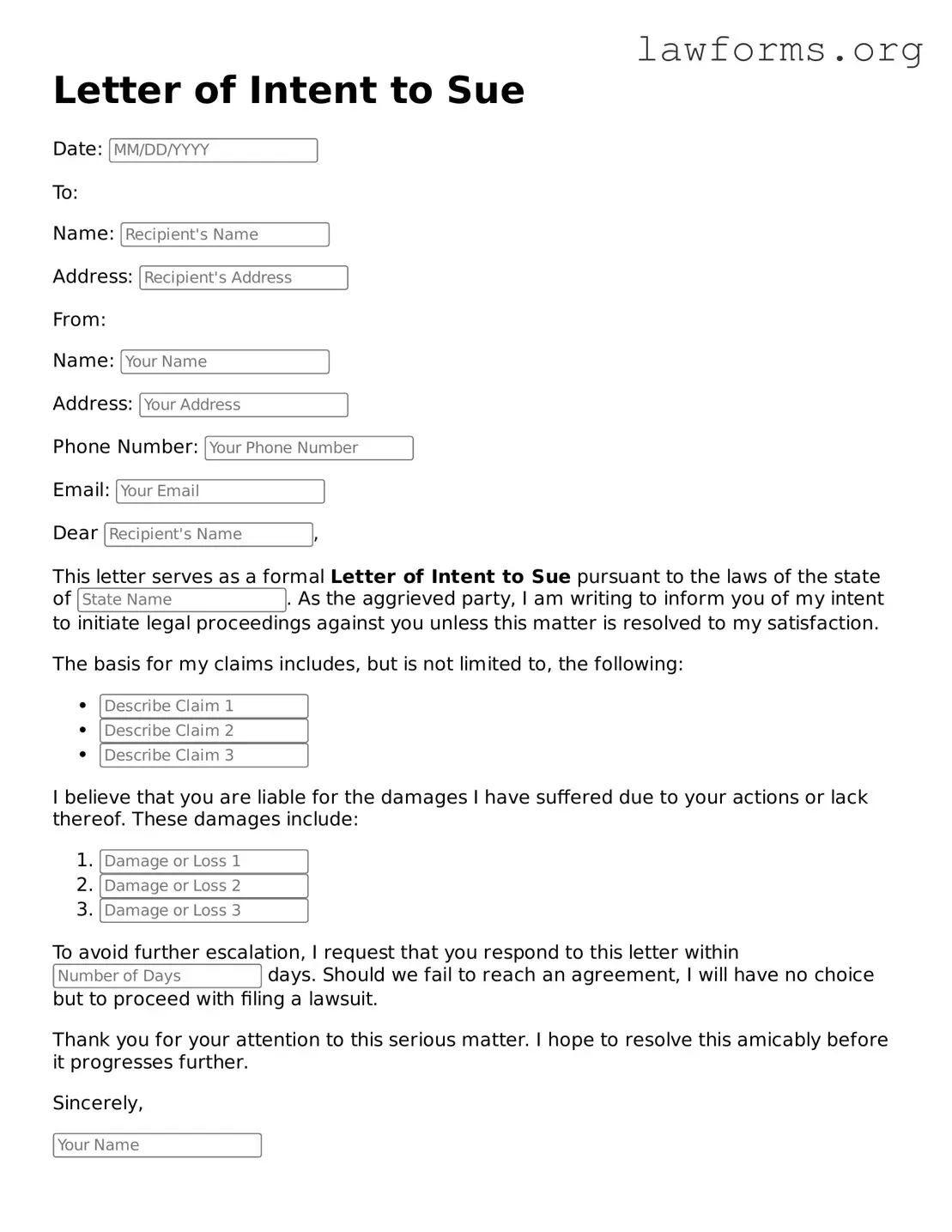Valid Letter of Intent to Sue Form
A Letter of Intent to Sue is a formal document that expresses a party's intention to initiate legal action against another party. This letter serves as a warning and outlines the reasons for the potential lawsuit, providing an opportunity for resolution before escalating to court. If you believe you need to take this step, consider filling out the form by clicking the button below.
Customize Document Online
